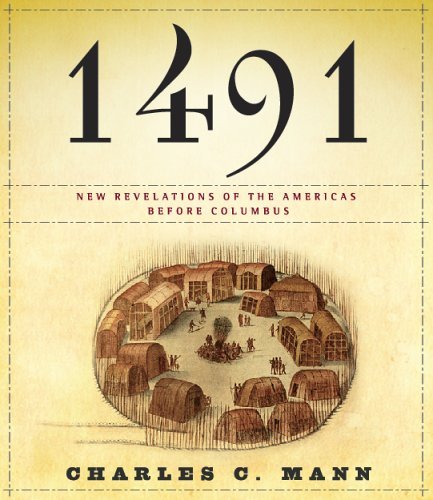First, Bishop Thomas is a psychiatrist who works running a research center on family studies (something along that line) and teaches occasionally at Northwestern a grad level brain physiology class. Basically these are his ideas or what he's studied, and you can take them or leave them as you will.
So he began be stating that when he went through the temple, he had no foreknowledge of anything and he was more than a little surprised. Hence his extensive search for information since then and his desire to help people understand and be prepared for the temple.
"We should give more attention to preparing our young people and some older people, for the work they are to do in the temple..It is not quite fair to let the young girl or young man enter the temple unprepared, unwarned, if you choose, with no explanation of the glorious possibilities of the first fine day in the temple." --John A. Widtsoe
He also quoted David O. McKay, who described his first temple attendance as focusing solely on the mechanisms and not the ritual or symbolism, hence learning nothing. (paraphrased from me).
Also, since most of our worship is didactic and we don't us icons or a lot a symbolism in our services (except the sacrament) we're not really used to symbolism in our religious culture so the temple comes as a bit of a shock. So in light of that, here's a list of symbolism that is common in our LDS culture:
- the sacrament
- baptism
- laying on of hands
- olive oil
- beehive
- sun, moon, stars
- 6 temple spires
- Angel Moroni
- LDS
- cloud stones/Ursa Major
- uplifted hand
- dark suit, white shirt -(I'll have to ask about this one)
- all-seeing eye
- 12 oxen
- temple
- temple recommend
- New Jerusalem
- White
- keystone
- cornerstone
- CTR
- stake
- ward
- Sacred Grove
"We live in a world of symbols. No man or woman can come out of the temple endowed as he should be, unless he has seen, beyond the symbol, the mighty realities for which the symbols stand. " John A Widtsoe
(Bishop Thomas addressed the whole topic rather academically by the way). He stated that temples EVERYWHERE in the world and every culture have the common theme of having the purpose to ascend to God. And usually set up in a three part structure: underworld (ie we do baptisms for the dead underground symbolic of this), earth or the preparatory part, and Heaven, which is to be in the presence of God.
Etymology of "Temple:" Latin (Templum):
- a space that has been marked (cut) out for observing heaven
- sacred space partitioned off from profane space
- navel of the earth (we're there to receive nourishment)
- designated space for communing with God
- Place where heaven and earth meet
- the primal hillock (Sumarian)--(this would be similar to Mt. Sinai idea)
- earthly representation of a heavenly pattern
The Garden of Eden--Mountains---tabernacle--- Temple (Soloman)---Temple(2nd)---Kirtland--Nauvoo---modern temples
He had a framed papyrus of Egyptian hieroglyphics of a dead Pharaoh passing through different sentinels making signs with his hands and holding cups of knowledge and receiving a new name, and finally joining the God Osiris (I think that was the one, I didn't write it down) in heaven and becoming a god himself. Hmmm.....
And for a few random tidbits:
He showed the first Angel Moroni weathervane that was a top the Nauvoo temple and pointed out several things. He's actually flying (as in flying in the midst of heaven) holding the BOM, wearing priestly robes, and having the symbols of a compass, and cross, and crown on it. Who knew? Not me.....
Stakes are actually symbolic of the stakes holding up the tabernacle (hence the temple) hence the stakes of the church are holding up the temple as there main priority.
Umm, and one funny story, he said Hugh Nibley (who I adore) wrote letters upon letters trying to get the presidency of the church to recognize their "mistake" in not having the entrance of the Provo temple face east. The whole thing of all the temples facing east is only a Mormon myth, and obviously, was not needed, since the Nauvoo temple faced west. (Hugh Nibley missed that, shame on him!)
Anyway, I hope that was enlightening, or at least, interesting. Next month I'll give you my notes from the next one. Oh, he also gave everyone a list of books related to temples and I can post that if anyone is interested. Just be forewarned that it's 5 pages long.



3 comments:
Thank you, thank you, thank you!! You da bomb and all that. So--now explain the symbolism of all those symbols you mentioned. I feel like such an idiot that I only understand a few. For someone who everyone thinks is bright . . .. Sigh.
Fabulous! I want to read everything you post about this.
My big question was about the dark suits, because apparently President McKay was known for wearing white/light colored suits. So what would be the symbolism there and why would Pres. McKay go with style over that? Curious!
I just got a couple of temple books off of J's bookshelf to explore more about temples myself . . . so a very fitting post for me. I am a literal thinker, which means I miss a heck of a lot of symbolism everywhere! I'm learning.
Andrea . . . I'm wondering if "You da bomb" is refined language? :-)
Post a Comment